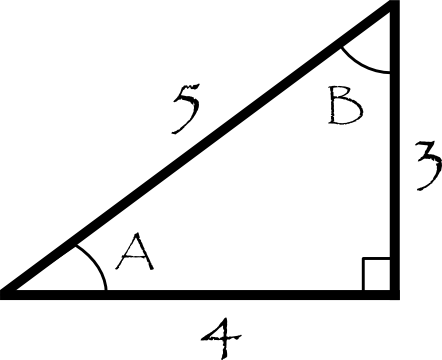What is #sin# ?
2 Answers
A few thoughts...
Explanation:
One way of understanding them is as the ratios of the sides of right angled triangles.
For example, here's a right angled triangle with sides

Applying
#sin A = "opposite"/"hypotenuse" = 3/5#
#cos A = "adjacent"/"hypotenuse" = 4/5#
#tan A = "opposite"/"adjacent" = 3/4#
Due to Pythagoras' theorem, we find that:
#(sin A)^2 + (cos A)^2 = 1#
for any angle
Note that you will often see
There is much more that could be said, but if you have only just come across
Please see below.
Explanation:
Sin is the abbreviated name for something called the sine. It is a topic of study in trigonometry. (tri - three, gon -- angle, metron -- measure)
There are several ways of "getting at" the sine, but probably the best approach to start with involves geometry.
In geometry, two figures are called "similar" if we can label sides so that corresponding sides are proportional.
(Get something to write with and something to write on.)
A triangle with sides of length
sides of length
sides of length
Now take the ratio of any two sides in the first triangle. It will be equal (proportional) to the corresponding two sides of the other triangle.
Here is a picture of a right triangle. The legs (the short sides) are labeled compared to the angle at
Now, any right triangle that has angle
With
We have names for each of these ratios that refer back to the angle
The sine of
Using geometry we can prove that if the angle at
And once we have done that we can be sure that in any right triangle with a
We say that the sine of


